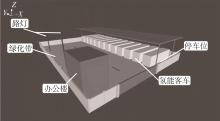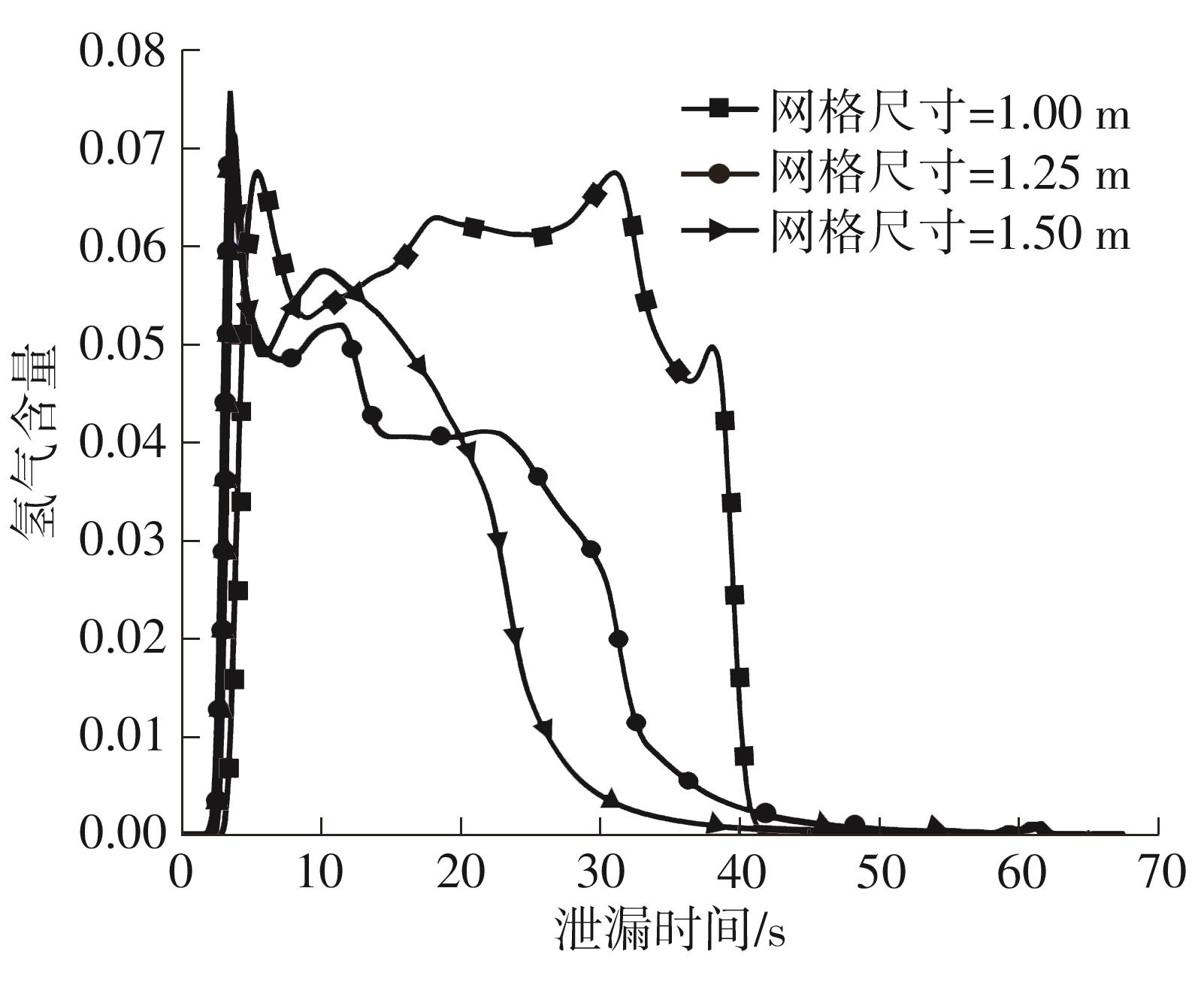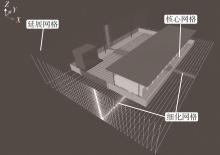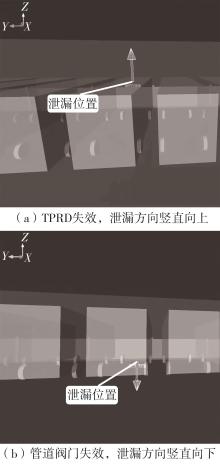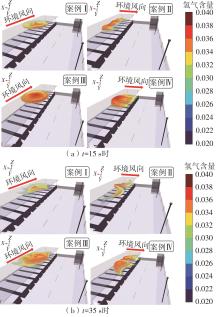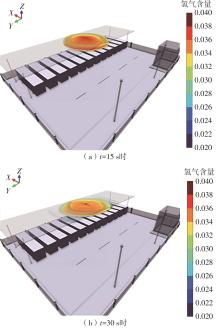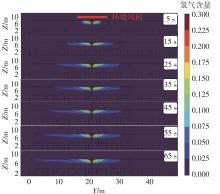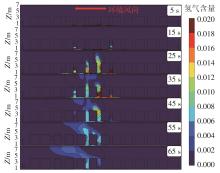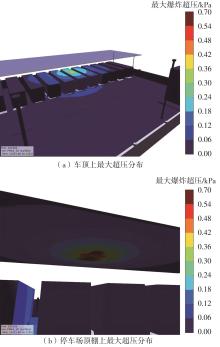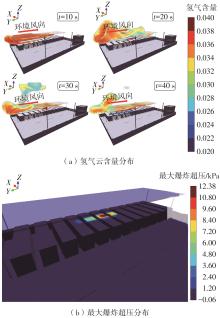| 1 |
LI H, LIU J D, TIAN Y,et al .Optimization design of the permanent seat structure of the hydrogen supply system of fuel cell bus[C]∥Proceedings of the 2021 IEEE Asia-Pacific Conference on Image Processing,Electronics and Computers(IPEC).Dalian:IEEE,2021:689-692.
|
| 2 |
黄亚娟 .中国氢燃料电池汽车技术发展现状及前景[J].时代汽车,2020(9):79-80.
|
|
HUANG Yajuan .Development status and prospect of hydrogen fuel cell vehicle technology in China[J].Auto Time,2020(9):79-80.
|
| 3 |
SHU Z, LEI G, LIU Z,et al .Motion trajectory prediction model of hydrogen leak and diffusion in a stable thermally-stratified environment[J].International Journal of Hydrogen Energy,2022,47(3):2040-2049.
|
| 4 |
EHRHART B D, HARRIS S R, BLAYLOCK M L,et al .Risk assessment and ventilation modeling for hydrogen releases in vehicle repair garages[J].International Journal of Hydrogen Energy,2021,46(23):12429-12438.
|
| 5 |
SHEN Y H, ZHENG T, LV H,et al .Numerical simulation of hydrogen leakage from fuel cell vehicle in an outdoor parking garage[J].World Electric Vehicle Journal,2021,12(3):118/1-10.
|
| 6 |
HUANG T, ZHAO M, BA Q,et al .Modeling of hydrogen dispersion from hydrogen fuel cell vehicles in an underground parking garage[J].International Journal of Hydrogen Energy,2022,47(1):686-696.
|
| 7 |
SALVA J A, TAPIA E, IRANZO A,et al .Safety study of a hydrogen leak in a fuel cell vehicle using computational fluid dynamics[J].International Journal of Hydrogen Energy,2012,37(6):5299-5306.
|
| 8 |
CHEN M, ZHAO M, HUANG T,et al .Measurements of helium distributions in a scaled-down parking garage model for unintended releases from a fuel cell vehicle[J].International Journal of Hydrogen Energy,2020,45(41):22166-22175.
|
| 9 |
MAKAROV D, VERBECKE F, MOLKOV V,et al .An inter-comparison exercise on CFD model capabilities to predict a hydrogen explosion in a simulated vehicle refuelling environment[J].International Journal of Hydrogen Energy,2009,34(6):2800-2814.
|
| 10 |
TANAKA T, AZUMA T, EVANS J A,et al .Experimental study on hydrogen explosions in a full-scale hydrogen filling station model[J].Pergamon,2007,32(13):2162-2170.
|
| 11 |
KIM E, PARK J, CHO J H,et al .Simulation of hydrogen leak and explosion for the safety design of hydrogen fueling station in Korea[J].International Journal of Hydrogen Energy,2013,38(3):1737-1743.
|
| 12 |
MIDDHA P, HANSEN O R .CFD simulation study to investigate the risk from hydrogen vehicles in tunnels[J].International Journal of Hydrogen Energy,2009,34(14):5875-5886.
|
| 13 |
MERILO E G, GROETHE M A, COLTON J D,et al .Experimental study of hydrogen release accidents in a vehicle garage[J].International Journal of Hydrogen Energy,2011,36(3):2436-2444.
|
| 14 |
TOLIAS I C, VENETSANOS A G, MARKATOS N,et al .CFD modeling of hydrogen deflagration in a tunnel[J].International Journal of Hydrogen Energy,2014,39(35):20538-20546.
|
| 15 |
PAPANIKOLAOU E A, VENETSANOS A G, HEITSCH M,et al .HySafe SBEP-V20:numerical studies of release experiments inside a naturally ventilated residential garage[J].International Journal of Hydrogen Energy,2010,35(10):4747-4757.
|
| 16 |
HUSSEIN H, BRENNAN S, MOLKOV V .Dispersion of hydrogen release in a naturally ventilated covered car park[J].International Journal of Hydrogen Energy,2020,45(43):23882-23897.
|
| 17 |
XIE H, LI X, CHRISTOPHER D M .Emergency blower ventilation to disperse hydrogen leaking from a hydrogen-fueled vehicle[J].International Journal of Hydrogen Energy,2015,40(25):8230-8238.
|
| 18 |
JUWARI, HANDOGO R, CAHYONO T,et al .Simulation of natural gas dispersion and explosion in vented enclosure using 3D CFD FLACS software[C]∥Proceedings of the 26th Regional Symposium on Chemical Engineering (RSCE 2019).Kuala Lumpur:[s.n.],2020:12144/1-13.
|
| 19 |
LIANG Y, PAN X, ZHANG C,et al .The simulation and analysis of leakage and explosion at a renewable hydrogen refuelling station[J].International Journal of Hydrogen Energy,2019,44(40):22608-22619.
|
| 20 |
GROTH K M, LACHANGE J L .Early-stage quantitative risk assessment to support development of codes and standard requirements for indoor fueling of hydrogen vehicles[R].California:Sandia National Laboratories,2012.
|
| 21 |
DADASHZADEH M, KASHKAROV S, MAKAROV D,et al .Risk assessment methodology for onboard hydrogen storage[J].International Journal of Hydrogen Energy,2018,43(12):6462-6475.
|
| 22 |
LACHANCE J, TCHOUVELEV A, ENGEBO A .Development of uniform harm criteria for use in quantitative risk analysis of the hydrogen infrastructure[J].International Journal of Hydrogen Energy,2011,36(3):2381-2388.
|
